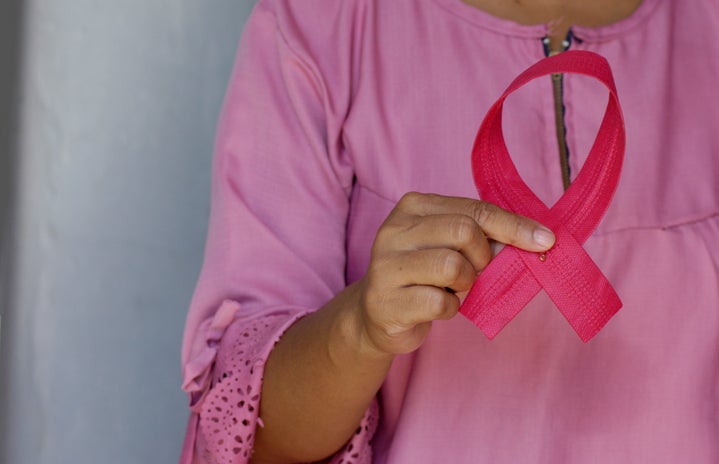When a young woman thinks about breast cancer, it’s a looming thought but something they don’t take too seriously. You’re still young and the chance of being diagnosed with breast cancer is extremely rare. Despite these true statements, the simple task of examining your own breasts should be done as often as you pay your rent.
The best way to start is to learn the basics. Officially, a breast self-examination is an inspection that is done on your own and helps you understand the normal look and feel of your breasts and underarm areas. Understanding what your body feels and looks like normally, which is known as breast self-awareness, is vital for a woman. If anything feels abnormal, it’s important to inform a doctor. Some common irregularities are new lumps in the breast, rash or swelling, or changes in the nipples. As uncomfortable as this topic can be; it’s important to understand the steps it takes for examination.
According to the National Breast Cancer Foundation, there are 3 ways a self-exam can be performed: in the shower, in front of the mirror, or lying down. If you are starting in the shower, you can check the entire breast and armpit area by pressing down with different forms of pressure. This can help check for lumps or hard knots in the breasts. The second method is efficient when checking for skin or rashes on your breasts. By standing in front of the mirror, it is easier to look for changes in the shape or color of your breasts and nipples. Lastly, you can do this examination by lying down which spreads the breast tissue along the chest wall. To check your right breast, reach your left arm across and use the pads of your fingers to check for lumps. These are the main three methods for self-exams but it can obviously be done by what is most comfortable for you. Nobody knows your body better than you do, so it’s crucial to prioritize your health and check for symptoms. According to Lillie D. Shockney, Johns Hopkins University Distinguished Service Professor of Breast Cancer, “Forty percent of diagnosed breast cancers are detected by women who feel a lump,”. Being educated about these examinations and the importance of understanding your body can not only put your mind at ease but also help you stay in tune with your body.
Kate Dent, a breast cancer survivor, always emphasizes the importance of self-examination and breast cancer awareness. At 42 years old and as a mom of 3 kids under the age of 10; she was diagnosed with breast cancer and went through a year of chemo and radiation treatment. “I definitely think women in college should do self-exams every month,” Dent said. “Even though statistically, it’s unlikely for a younger person to have breast cancer, it can happen.” She first found a mass on a self-exam and despite having a mammogram previously, she still had a lumpectomy and surgery later on to remove some lymph nodes. After surviving this life-threatening experience, Dent is thankful she found her lump in time to be treated successfully and hopes that women understand the importance of understanding their own bodies in order to look out for themselves. She has now been cancer-free for 10 years. “ Early detection is key for everything. It’s never too early to start and again it’s important to know your breasts, so if something is different, you will know right away.”


